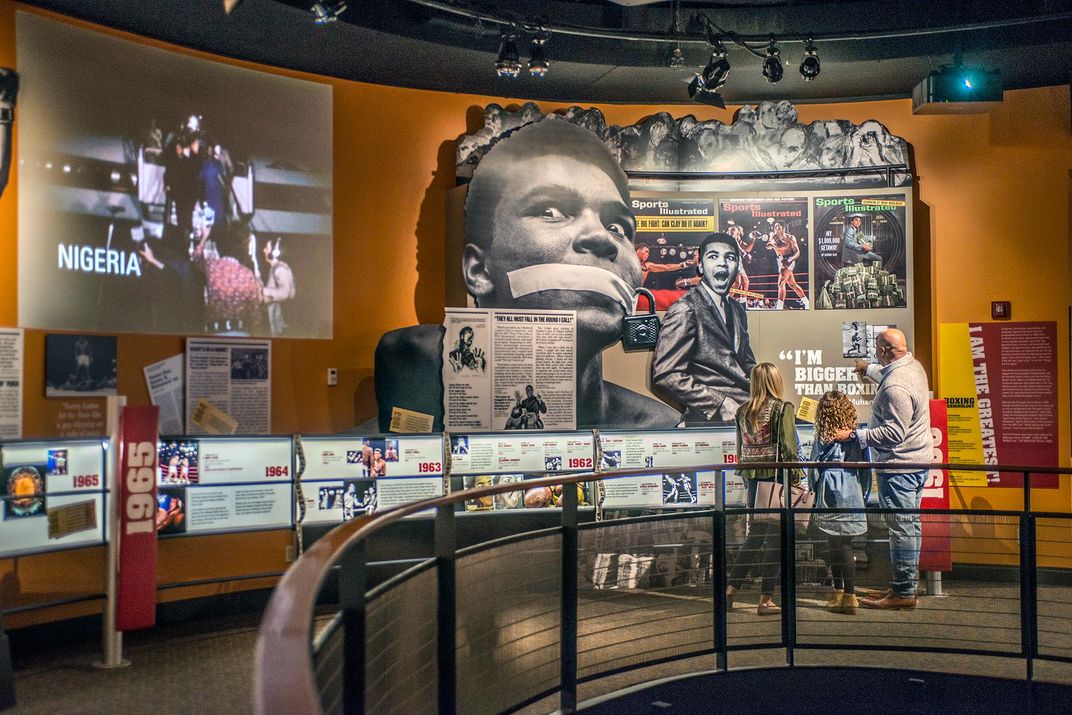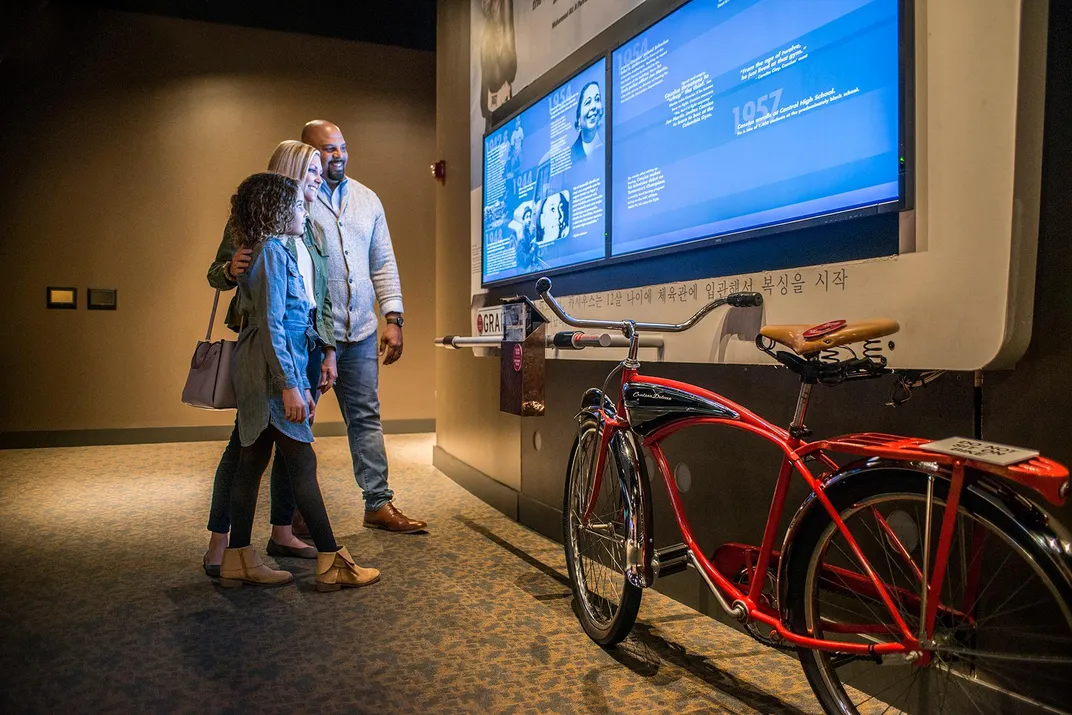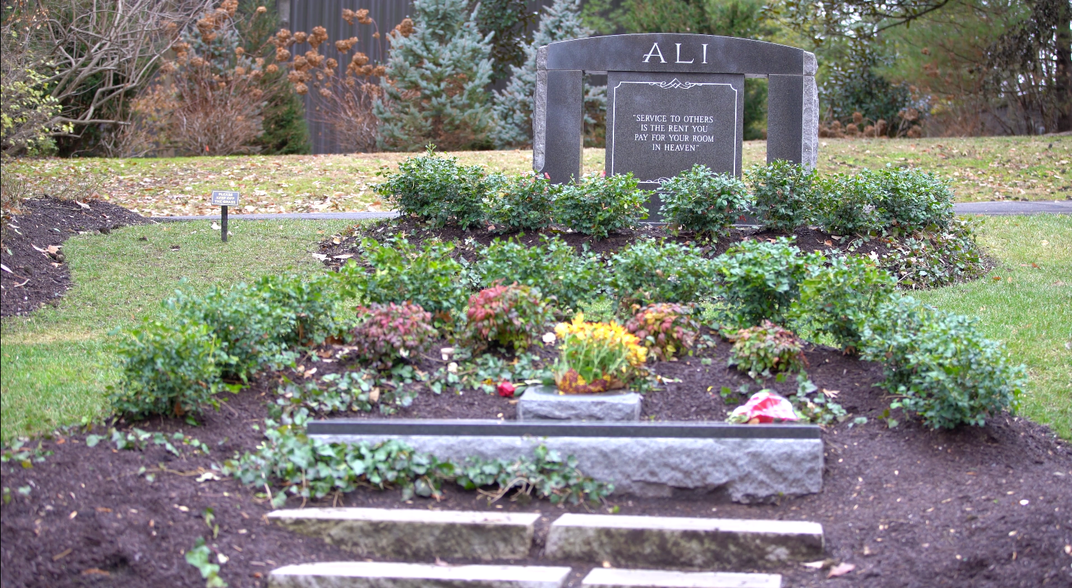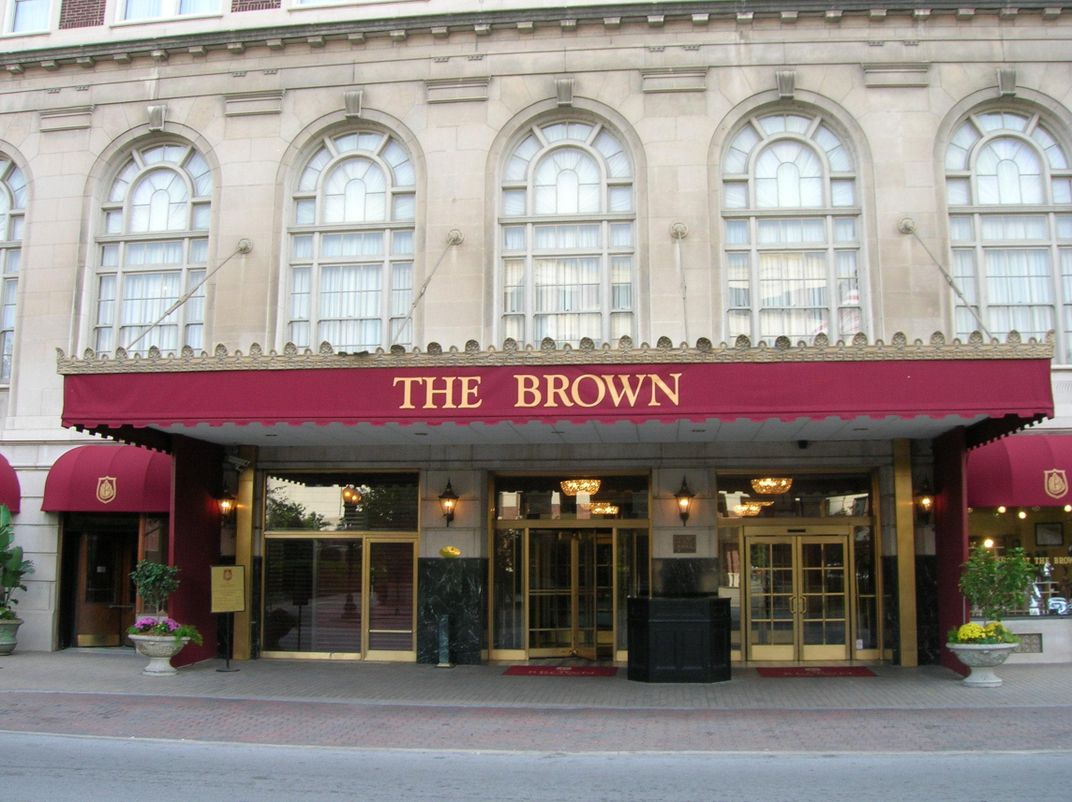In the summer of 1960, eighteen-year-old Cassius Clay traveled from his hometown of Louisville, Kentucky, to the Summer Olympics in Rome.
He was relatively untested and competing against some of boxing’s most decorated veterans—in the final round of competition his opponent was Zbigniew Pietrzykowski, one of Poland’s most decorated athletes and already an Olympic medal winner.
Clay defeated Pietrzykowski to win the gold medal and became an instant sports superstar. As he turned pro and set out on the road that would lead to him becoming one of the most famous athletes of all time, he hit milestones well-known to even the most casual of boxing fans: a 1964 defeat of Sonny Liston in what was one of the world’s most watched sporting events, and 1974’s “Rumble in the Jungle,” a fight against undefeated Heavyweight Champion of the World George Foreman in front of 60,000 people in Zaire.

Fans and critics alike also followed Clay’s spiritual and political journeys—in 1964 he converted to the Nation of Islam and formally changed his name to Muhammad Ali, becoming close to civil rights icon Malcolm X. In 1967, Ali was drafted into the United States Army, and in protest of both racism at home and imperialism abroad, he refused to fight in what he saw as an unjust war in Vietnam. At the time, Ali made this statement at great cost to himself—he was stripped of his heavyweight title and faced scorn from audiences not accustomed to athletes making political statements. Decades later, many consider that statement a key part of Ali’s legacy, one that includes bravery in calling out injustice and dedication to service in the form of extensive charity work in America and abroad.
And while many Ali fans know he came from Louisville, his life in that city, from his childhood introduction to boxing to the award-winning museum he helped found, still offers surprising stories and new insights into the heart and mind of one of America's greatest sports icons. Get to know Muhammad Ali and the city that made him at these six Louisville locations.
Muhammad Ali Center

Any visit to Ali’s Louisville starts with a visit to the Muhammad Ali Center, a modern museum and cultural center devoted to his life and legacy. It’s here that visitors will see a replica of Ali’s childhood bicycle—when the Schwinn was stolen, legend has it, the policeman Ali asked for help in recovering the bike suggested he take up boxing.
The Center’s permanent exhibitions are built around Ali’s Six Core Principles: Confidence, Conviction, Dedication, Giving, Respect and Spirituality, and visitors can watch video recordings of Ali speeches and events, step into the ring in a recreation of his training facilities and follow his journey as an Olympian.
Muhammad Ali Childhood Home
The Clay family moved into the modest house at 3302 Grand Avenue in 1947, when Ali was just five years old, and lived there through the early 1960s. Cassius Clay Sr. was a sign-painter and artist, and Ali’s mother Odessa, was a devout Baptist who instilled in Ali a moral compass that would guide his career and political life. The house has changed hands several times since then, and in recent years, was restored to the way it would have looked when the Clays lived there, a process that included repainting the exterior the color pink, as Clay Sr. did for his wife Odessa.
Cave Hill Cemetery

A picturesque Victorian cemetery, Cave Hill is Ali’s final resting place. His headstone is simple granite, featuring an inscription taken from one of Ali’s speeches:
“He took a few cups of love, he took one tablespoon of patience, one teaspoon of generosity, one pint of kindness. He took one quart of laughter, one pinch of concern, and then he mixed willingness with happiness, he added lots of faith, and he stirred it up well. Then he spread it over a span of a lifetime, and he served to each and every person he met.”
Ali’s grave faces east in accordance with Islamic tradition, and the site features two stone benches where visitors can pause for reflection. The cemetery itself was founded in 1848 and encompasses a lake and several smaller ponds. Other famous residents include Colonel Harland David Sanders, founder of Kentucky Fried Chicken.
Spalding University (Columbia Gym)
Earlier this year a historical marker was added outside the Columbia Gym on Fourth Street. It’s here that 12-year-old Cassius Clay first stepped inside the ring and learned to fight, after the fateful bike incident. Today, a red bike hangs in tribute to Ali above the entrance of the building which now serves as the athletic building for Spalding University. The lower level, where the boxing gym used to be, now houses a student fitness center, locker rooms and a health clinic. A series of photo panels honoring Ali’s time there line the lower level walls.
Freedom Hall
Since 1956, Freedom Hall has served as the home of major Kentucky sports teams, including, until 2010, the University of Louisville men’s basketball team. On October 29, 1960, Freedom Hall was also the site of Muhammad Ali’s first professional boxing match. That night, he defeated Tunny Hunsaker in a six-round decision. Hunsaker, who also served as the Fayetteville, West Virginia chief of police, said later that "Clay was as fast as lightning ... I tried every trick I knew to throw him off balance, but he was just too good.” Despite political differences, the two men would remain friends for the rest of their lives.
Brown Hotel

The Brown Hotel, in downtown Louisville, is listed on the National Register of Historic Places, and while it wasn’t a major factor in Ali’s time in Louisville, the legend did officially dedicate the suite named for him here in 2001. Featuring a pair of signed boxing gloves and decorated with photos of iconic Ali moments, the suite is certainly a sign that Ali is one of the city’s most important—and most beloved—draws.


/https://tf-cmsv2-smithsonianmag-media.s3.amazonaws.com/filer/7c/d1/7cd12b3e-1288-4749-aa43-ecead57b969f/ali_center_int.jpg)